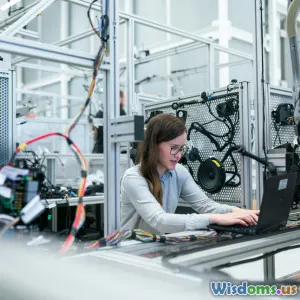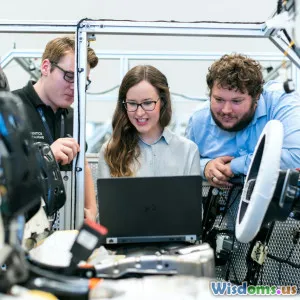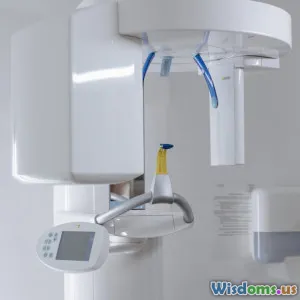
Three Emerging Automation Technologies to Watch in 2024
7 min read Discover three groundbreaking automation technologies set to revolutionize industries in 2024 and beyond. (0 Reviews)
Three Emerging Automation Technologies to Watch in 2024
In an era where speed, precision, and adaptability dictate business success, automation stands at the forefront of technological evolution. As we venture further into 2024, a wave of innovative automation technologies is reshaping industries from manufacturing to healthcare, unlocking new possibilities previously deemed science fiction. But which emerging automation trends truly deserve your attention this year?
This article dives deep into three standout automation technologies poised to revolutionize operations, productivity, and innovation in 2024 and beyond.
1. Intelligent Process Automation (IPA) — Redefining Business Workflows
While traditional automation tackles well-defined, repetitive tasks, Intelligent Process Automation marries robotic process automation (RPA) with artificial intelligence (AI) and machine learning (ML) to tackle complex, decision-based operations. This hybrid approach enables systems not only to follow rules but to interpret data, learn, and improve processes autonomously.
How IPA Outpaces Basic Automation
Take the insurance industry: claims processing often involves analyzing unstructured data —claims forms, emails, and documents—which traditional RPA finds challenging. IPA leverages natural language processing (NLP) to extract context from these inputs, make decisions (like flagging suspicious claims), and expedite approvals with minimal human intervention.
- Example: UiPath announced that their IPA solutions helped a major health insurer reduce claim turnaround time by 40%, simultaneously cutting operational costs.
Real-World Impact
According to McKinsey, businesses integrated with IPA can improve productivity by up to 30%, with increased accuracy and compliance.
Moreover, IPA adapts over time, learning from exceptions and evolving processes, offering scalability to organizations struggling with rapidly changing market dynamics.
2. AI-Driven Robotics — Bridging Physical Automation with Intelligent Insights
Robotics combined with AI advancements is powering a new generation of machines capable of perception, reasoning, and autonomous decision-making—transitioning from fixed, repetitive automation to versatile collaborators.
From Factory Floors to Warehouses
In manufacturing, AI-driven robots can identify defective products without human supervision. For instance, FANUC’s latest AI-integrated robotic arms leverage vision systems to detect anomalies during production, reducing defective units by up to 50%.
Warehousing Revolution
Amazon’s use of AI-powered drones and robots like Kiva Systems exemplifies how automation enhances real-time inventory management and order fulfillment, cutting delivery times and operational expenses.
Beyond Industry
Healthcare is witnessing robots equipped with AI assisting surgeons or automating pharmacy dispensing, heralding increased precision and reducing human error.
Dr. Sarah Morgan, robotics expert at MIT, states, “The integration of AI enables robots to perform tasks with a level of autonomy and adaptiveness unseen before, paving the way for augmented human-robot collaboration.”
3. Autonomous Edge Computing — Empowering Decentralized Automation
Edge computing places data processing closer to where data is generated rather than centralized cloud servers. When combined with automation, this shift unlocks real-time decision-making capabilities crucial for latency-sensitive applications.
What is Autonomous Edge Computing?
Autonomous edge devices collect, analyze, and act on data locally without the delay of cloud communication. This capability is transformative for industries requiring instantaneous responses.
Practical Applications
- Smart Cities: Traffic management systems use edge AI to adjust signals in real time, reducing congestion and emissions.
- Industrial IoT: Manufacturing plants rely on edge computing-enabled sensors to detect anomalies and trigger automatic shutdowns before costly failures.
Case Study
Siemens deployed edge-computing enabled automation across its gas turbines, reducing maintenance incidents by 25% due to faster fault detection and localized processing.
Why It Matters
According to Gartner, by 2025, 75% of enterprise-generated data will be created and processed outside traditional data centers — driving massive growth in autonomous edge automation.
This decentralization enhances reliability, privacy, and scalability — critical factors as IoT devices proliferate.
Conclusion
2024 is poised to be a pivotal year, where automation transcends simple task execution to form intelligent, adaptive ecosystems empowering businesses and societies alike. Whether it’s Intelligent Process Automation transforming workflow complexity, AI-driven robotics redefining collaboration between humans and machines, or autonomous edge computing delivering instantaneous decisions at scale, these technologies herald a future where efficiency and innovation accelerate hand in hand.
For organizations aiming to stay competitive, embracing these emerging automation technologies is no longer optional but imperative. Understanding their potentials and applications today equips decision-makers to harness the next wave of digital transformation successfully.
As automation technologies continue to evolve, staying informed will turn promising innovations into tangible results — leaving you not only to watch 2024 unfold but to actively steer the future.
Ready to step into the next frontier of automation? Exploring these cutting-edge innovations today can position your enterprise for growth, agility, and lasting impact in tomorrow’s smart ecosystems.
Rate the Post
User Reviews
Popular Posts





















